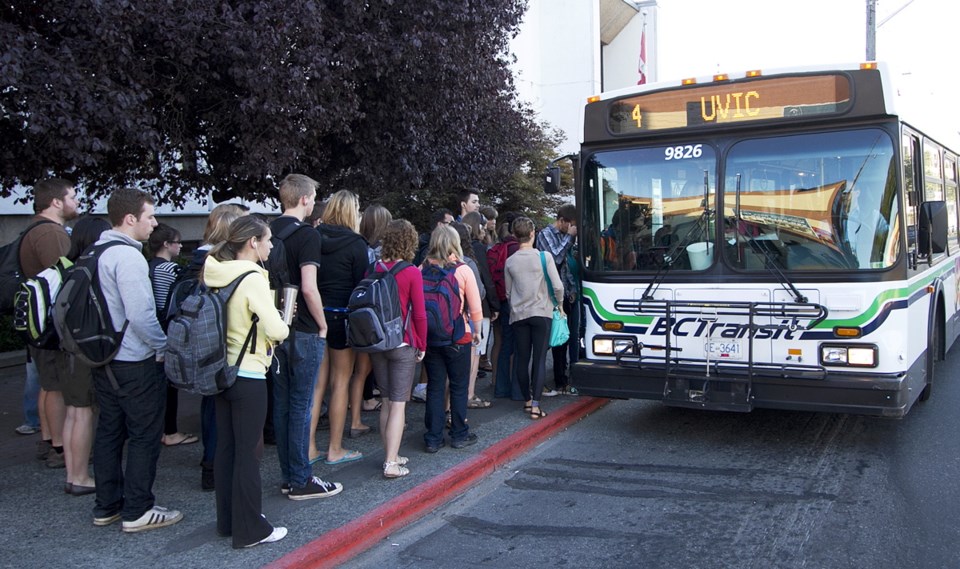Greater Victoria residents who are forced to stand on crowded buses, missing connections and facing delays due to traffic congestion can breathe easier thanks to a $1.63-million injection from the province to the Greater Victoria Transit Commission.
The commission will be able to add 20,000 service hours in 2017-18 and to buy eight new buses, said chair Susan Brice.
The funding comes five weeks after commission members expressed fears that service expansion could grind to a halt because a two-cent-a-litre increase in the gasoline tax did not materialize in the February provincial budget.
Separate funding covers two new HandyDART buses and 4,000 hours in expanded service for people with mobility issues.
Brice said she is pleased by the Ministry of Transportation funding, saying it will provide “a good, healthy injection of new service. … Normally, we hope to buy two or three new buses in a year. This is eight.”
Four of the buses and 12,800 hours are earmarked to “address immediate overcrowding and reliability issues by increasing the frequency and timing of existing scheduled trips,” a B.C. Transit document says.
Another two buses and 3,600 hours are meant to extend service for Dockyard to Western Exchange, and Juan de Fuca Rec Centre to Langford Exchange and Langford Town Centre.
A further two buses and 3,600 hours will expand service connecting Langford Exchange and Town Centre with Camosun College’s Interurban campus, the Royal Oak Exchange and the University of Victoria.
As to the routes that will be affected, “we will put our approval to that at our June meeting,” Brice said.
Ben Williams, president of Unifor Local 333, which represents transit drivers, expressed relief at the funding. “It’s badly needed. We haven’t seen expansion of hours in Victoria for years. Any expansion of transit is obviously a good thing and this will definitely start to address some of the running time issues.”
More than 60 per cent of the 20,000 hours are needed just to keep the status quo on schedules, he said, because traffic congestion slows the system down by two to three per cent a year. “Without this added funding, we were looking at losing 30 to 40 trips per day.”
The commission has lobbied to increase the transit portion of the gasoline tax in Greater Victoria from 3.5 cents per litre, which raises $11.7 million a year. It wants a 5.5-cent tax, raising a further $7 million.
In the Lower Mainland, funding for the TransLink system includes a 17-cents-per-litre gas tax.
The $1.63 million will cover the next fiscal year, and the transit commission “will continue to work with the province on a long-term funding solution,” Brice said.
Transit relies on bus fares, property taxes and the gas tax for two thirds of its budget, with the province paying for about one third. The 2017-18 budget has $128.5 million in spending, up from $120.6 million last year.
Fares were increased in April 2016, bringing in an extra $2 million by February 2017. During that period, despite higher fares, there were more riders, with 100,000 additional passenger trips recorded, B.C. Transit said.
The property tax levy has more than doubled in the past decade to an average of $134.



